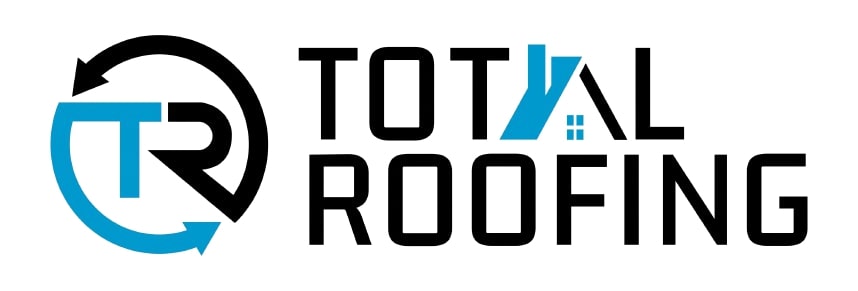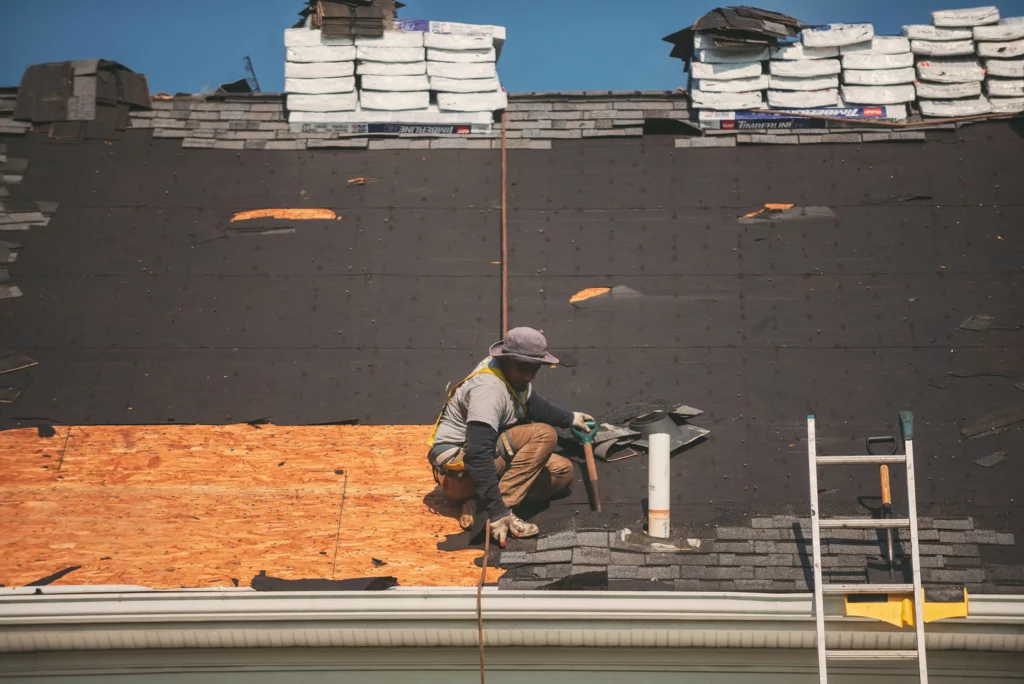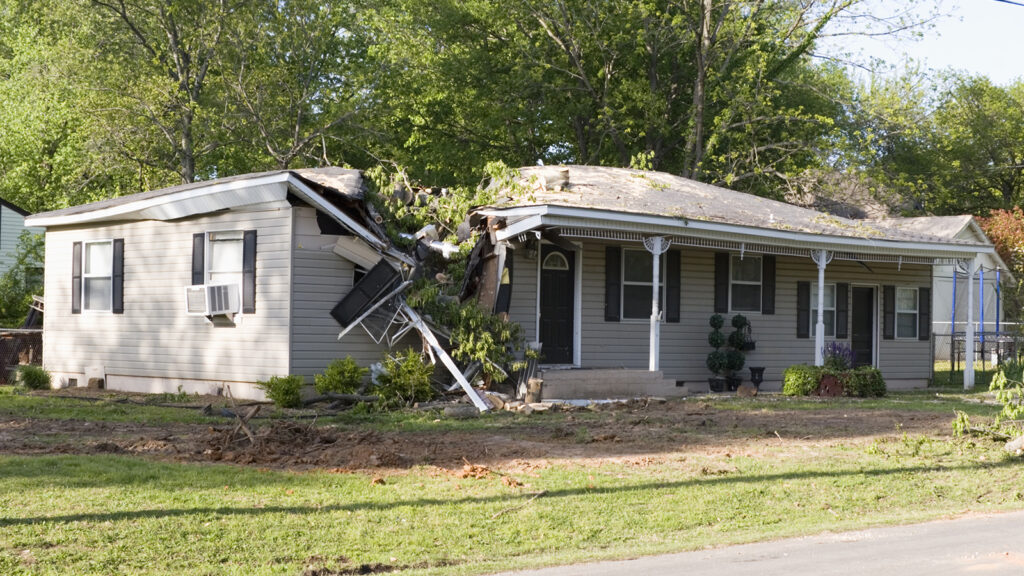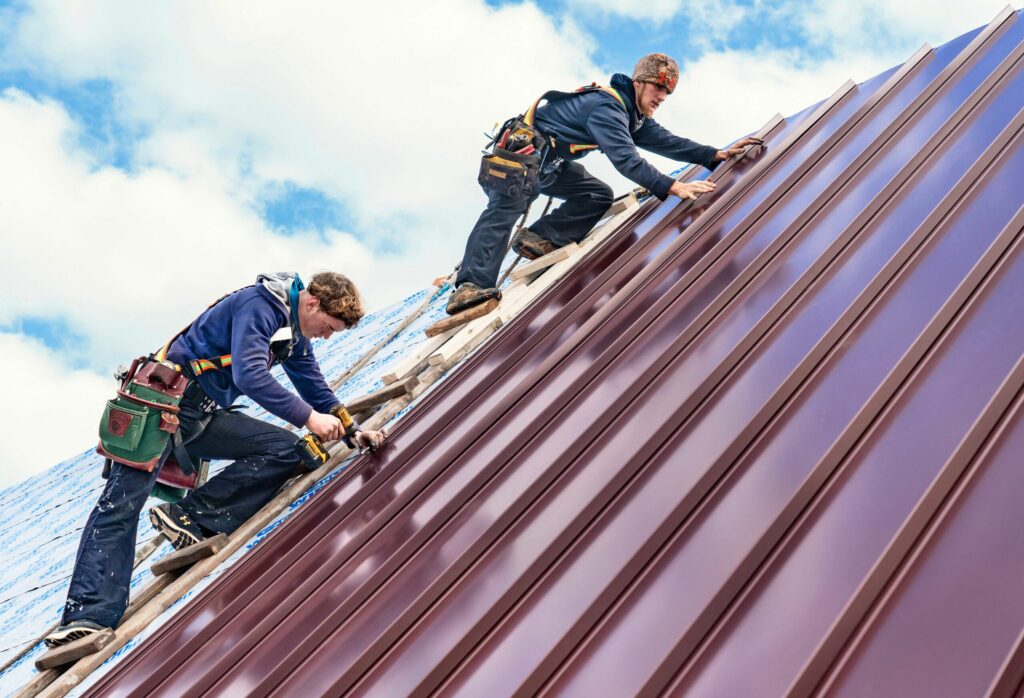When a powerful storm rolls through, your roof is your home’s first line of defense against nature’s harshest elements—high winds, heavy rain, hail, and flying debris. But what many homeowners don’t realize is that storm damage isn’t always immediately visible from the ground. What looks like a few missing shingles could signal deeper, costly issues hiding beneath the surface.
Failing to spot the signs of roof damage early can lead to severe structural problems, costly repairs, and even the need for a full roof replacement. To protect your investment, here are five clear signs that your roof may need replacing after a storm.
1. Missing or Severely Damaged Shingles
One of the most common signs of storm damage is missing or damaged shingles. High winds can lift shingles, break the adhesive seal, or completely rip them off your roof. Hail can crack, dent, or puncture them, reducing their effectiveness.
Even if only a few shingles are missing, it exposes your roof’s underlayment and decking to moisture. Over time, this can lead to water penetration, wood rot, and mold growth—compromising your entire roofing system.
What’s more, shingle damage is not always easy to see from the ground. A professional inspection might reveal cracked shingles, curling, or blistering—conditions that weaken your roof’s ability to protect your home from future weather events.
Pro Tip: If you find pieces of shingles scattered in your yard or see uneven patches on your roof after a storm, don’t delay—call a roofing expert immediately.
2. Water Leaks or Stains on Ceilings and Walls
Water leaks are a serious red flag that your roof is no longer functioning as it should. After a storm, moisture can find its way through compromised shingles, flashing, or roof seams, eventually dripping into your attic and living spaces.
Ceiling stains, water spots, or bubbling paint inside your home are often the first visible signs. However, by the time you notice these symptoms, water has likely been infiltrating your roofing system for days or even weeks—leading to mold growth, insulation damage, and potential structural issues.
Ignoring leaks or patching them temporarily won’t solve the root problem. If a storm caused widespread damage, you might need more than just a repair—you may need a full roof replacement to ensure your home is fully protected.
Pro Tip: Inspect your attic regularly after storms for any damp spots, wet insulation, or signs of mold growth.
3. Excessive Granule Loss in Gutters and Downspouts
Asphalt shingles are designed with a protective layer of granules that shield them from the sun’s UV rays and enhance their waterproofing ability. Over time, some granule loss is normal. However, severe storms—especially those with hail or heavy rain—can strip these granules away at an accelerated rate.
One way to check is by looking in your gutters and downspouts after a storm. If you find a significant buildup of black or gray granules, it’s a sign your shingles have sustained substantial damage. Losing granules weakens the shingles, shortens your roof’s lifespan, and increases the risk of leaks.
Widespread granule loss can also lead to the shingles becoming brittle and cracking, leaving your roof vulnerable to further damage. In many cases, if enough shingles are compromised, a roof replacement is the most cost-effective and secure solution.
Pro Tip: Keep an eye on your gutter system post-storm, as granule loss is often the first sign of hail damage that might not be visible otherwise.
4. Sagging Rooflines or Structural Irregularities
A well-maintained roof should have straight lines and a uniform slope. If you notice any sagging areas, dips, or uneven sections after a storm, it’s a serious sign of internal damage. This type of damage is typically caused by prolonged water infiltration or heavy debris impact that compromises the structural integrity of the roof.
Sagging can indicate that the underlying wood decking is rotting, the supports have weakened, or moisture has seeped deep into the roofing system. Left unaddressed, this can lead to partial or complete roof collapse—posing a severe safety risk to your home’s occupants.
Unlike missing shingles, sagging is a structural issue that often requires significant repair or full roof replacement to restore the roof’s integrity.
Pro Tip: Always walk around your property after a storm and view your roof from multiple angles. Any visible dips or irregularities warrant an immediate professional inspection.
5. Increased Energy Bills Post-Storm
While this sign is less obvious than physical damage, a sudden spike in your energy bills after a storm could indicate roofing problems. Storm damage can weaken the roof’s insulation or create gaps that allow air to escape. As a result, your HVAC system must work harder to maintain comfortable indoor temperatures.
If your attic insulation gets wet due to leaks, its effectiveness diminishes, further increasing your heating and cooling costs. Damaged or missing shingles also contribute to poor thermal performance, allowing heat to escape during winter or enter during summer.
If you notice unexplained increases in energy usage after a major storm, it’s worth having your roof inspected for hidden damage.
Pro Tip: Energy inefficiency can cost you thousands over time. Addressing roof damage sooner rather than later saves on utilities and prevents worsening problems.
Why You Should Act Fast on Roof Damage
Delaying roof inspections or repairs after a storm can lead to costly consequences. Minor issues like a few missing shingles or small leaks might seem manageable now, but they can escalate into major repairs or full roof replacement if left unattended.
Additionally, most homeowners’ insurance policies have strict timelines for filing storm damage claims. Waiting too long might jeopardize your ability to get your repair or replacement covered.
Key Reasons to Act Quickly:
- Protect your home from further water damage
- Avoid mold and mildew growth
- Prevent costly structural repairs
- Ensure insurance claim eligibility
- Maintain your home’s value and curb appeal
Final Thoughts: Schedule a Roof Inspection After Every Major Storm
Your roof is one of the most critical components of your home’s defense system. After a severe storm, it’s not enough to assume your roof is fine because you don’t see damage from the ground. Many signs of serious issues are subtle or hidden until it’s too late.
If you notice any of the signs discussed above—or even if you’re unsure—schedule a professional roof inspection. An experienced roofing contractor can identify damage, guide you through potential insurance claims, and recommend whether a repair or full replacement is necessary.
Investing in a prompt inspection and necessary repairs or replacement protects your home, your family, and your peace of mind.



